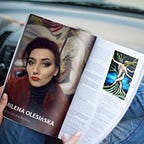Cy Twombly — Abstract art — abstract expresionism
“Edwin Parker “Cy” Twombly, Jr. (April 25, 1928 — July 5, 2011) was an American painter, sculptor and photographer
After his return in 1953, Twombly served in the U.S. army as a cryptologist, an activity that left a distinct mark on his artistic style.From 1955 to 1959, he worked in New York, where he became a prominent figure among a group of artists including Robert Rauschenberg, with whom he was sharing a studio, and Jasper Johns. Exposure to the emerging New York School purged figurative aspects from his work, encouraging a simplified form of abstraction. He became fascinated with tribal art, using the painterly language of the early 1950s to invoke primitivism, reversing the normal evolution of the New York School. Twombly soon developed a technique of gestural drawing that was characterized by thin white lines on a dark canvas that appear to be scratched onto the surface. His early sculptures, assembled from discarded objects, similarly cast their gaze back to Europe and North Africa. He stopped making sculptures in 1959 and did not take up sculpting again until 1976…..
In an essay in the catalogue to the 2011 Dulwich exhibition , Katharina Schmidt summarizes the scope and technique of Twombly’s œuvre:
“Cy Twombly’s work can be understood as one vast engagement with cultural memory. His paintings, drawings and sculptures on mythological subjects have come to form a significant part of that memory. Usually drawing on the most familiar gods and heroes, he restricts himself to just a few, relatively well-known episodes, as narrated by poet-historians, given visible shape by artists and repeatedly reinterpreted in the literature and visual art of later centuries…..His special medium is writing. Starting out from purely graphic marks, he developed a kind of meta-script in which abbreviated signs, hatchings, loops, numbers and the simplest of pictographs spread throughout the picture plane in a process of incessant movement, repeatedly subverted by erasures. Eventually, this metamorphosed into script itself.”
However, in a 1994 article Kirk Varnedoe thought it necessary to defend Twombly’s seemingly random marks and splashes of paint against the criticism that “This is just scribbles — my kid could do it”.
“One could say that any child could make a drawing like Twombly only in the sense that any fool with a hammer could fragment sculptures as Rodin did, or any house painter could spatter paint as well as Pollock. In none of these cases would it be true. In each case the art lies not so much in the finesse of the individual mark, but in the orchestration of a previously uncodified set of personal “rules” about where to act and where not, how far to go and when to stop, in such a way as the cumulative courtship of seeming chaos defines an original, hybrid kind of order, which in turn illuminates a complex sense of human experience not voiced or left marginal in previous art “…………..More
